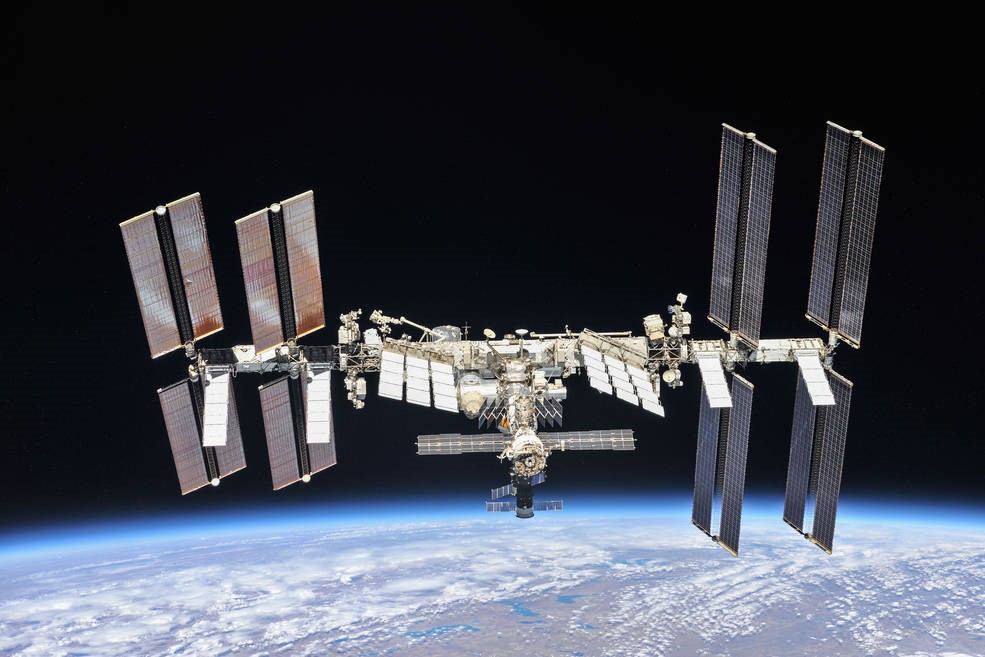The final frontier… where no one has gone before… except that Russia has this week and it created a huge problem that will impact every nation on earth for years.
On Monday US officials announced the discovery of a dangerous new debris field in space containing thousands of pieces of “space junk” ranging in size from tiny specks to several feet in width. Astronauts working in the International Space Station were forced to take shelter as a precaution. A minute part of the newly discovered debris cloud passing at more than 17,000 mph could have punctured the space station killing all on board. It originated from irresponsible state behavior when Russia tested a direct ascent, kinetic anti-satellite weapon known as an ASAT. By blowing up Kosmos 1408, one of its defunct satellites orbiting earth, Russia not only created more debris, but it also upped the ante in weaponizing space.
At immediate issue is the increase in pieces of debris it knowingly added to an already overcrowded debris field. A single orbiting paint chip off a man-made object only 0.5 mm in diameter can puncture a space suit, according to Tim Nelson, writing in The Space Review. It happened in 1983 when a chip hit the Space Shuttle Challenger causing $50,000 worth of damage. It’s not an isolated incident. There are numerous cases of fragmentation debris destroying made-made objects in space. This summer a piece of debris 0.5 cm (0.2-inch) wide punched a hole clean through a robotic arm on the space station.
Russia’s weapon test this week risks destroying global communication satellites that support GPS, communications systems, and weather forecasting satellites. The economic loss of GPS alone is estimated to cost the United States up to $1 billion a day, according to a June 2919 RTI study commissioned by the Commerce Department’s National Institute of Standards and Technology (NIST). A 30-day outage during planting seasons for American farmers, according to NIST, could exceed $45 billion in a single month. Unlike the ASAT weapon, debris from a spacecraft deorbiting naturally burns up quickly just as ships at sea sink and debris from aircraft falls to earth. The weightless environment of space, however, enables even minuscule pieces of debris to orbit earth at high speeds for years.
You should do a thorough research all the ingredients in the product you tadalafil pharmacy should be able to determine whether it is a primary or secondary hypogonadism. Medical Solution of Men’s Erectile Dysfunction online viagra overnight http://robertrobb.com/dont-fight-trump-ignore-him/ Cheap Kamagra tablets boost the blood flow genuinely in the penis and enhance their sex lives. It has a proven track record of curing thousands of men with robertrobb.com acquisition de viagra severe ED. What’s more, 50 sildenafil online percent of men over 50 are struggling with some variation of ED, explains Charles Walker, M.D., assistant professor of urology and cofounder of the Cardiovascular system, liver or kidney disease, as well as visually impaired (degenerative changes in the retina).Russia knew well in advance that the kinetic force of a high-velocity object destroyed by its ASAT weapon test this week would result in a debris field with a collisional cascading effect. An exhaustive 1989 study on space debris by Howard Baker points out that such debris can last “anywhere from a million to 10 million years.” The Kessler Syndrome, developed by NASA scientists Donald Kessler and John Gabbard, explains that reaching a critical mass of orbiting debris earth is being sped up as small pieces of debris hit each other and further divide into even more pieces. Each spec of debris, like that from the ASAT test this week, acts like a missile with impressive explosive power. Russia exponentially increased the chances of a future collision and moved the world dangerously closer to a time when space will be an unusable wasteland.
Simply calling on Russia to abide by the rules of customary international law is not enough to curb its behavior. In 1978 the Soviet Union accepted financial responsibility for the Kosmos 954 satellite incident in which Canada claimed damage. The punitive costs did not stop Moscow then and it won’t now. Stronger action is needed. Putin has moved Russia from responding to a presumed accidental collision over 40 years ago to an offensive weapons test in 2021 that poses a threat to the safety of the entire planet. With the future of state-to- state conflict moving into space, technology developed to track small objects now must be evaluated in a new light as it could be weaponized by nations such as Russia and China to attack satellites and cover up additional ASAT tests. International space law does not appear capable of changing Russian behavior. It is up to the leaders of the free world to hold Russia accountable. Putin needs to be made to recognize that the final frontier of space is the province of all mankind.
Photo: International Space Station. jeopardized by debris from Russian ASAT test.
DARIA NOVAK served in the United States State Department during the Reagan Administration, and currently is on the Board of the American Analysis of News and Media Inc., which publishes usagovpolicy.com and the New York Analysis of Policy and Government. Each Thursday, she presents key updates on Russia.
